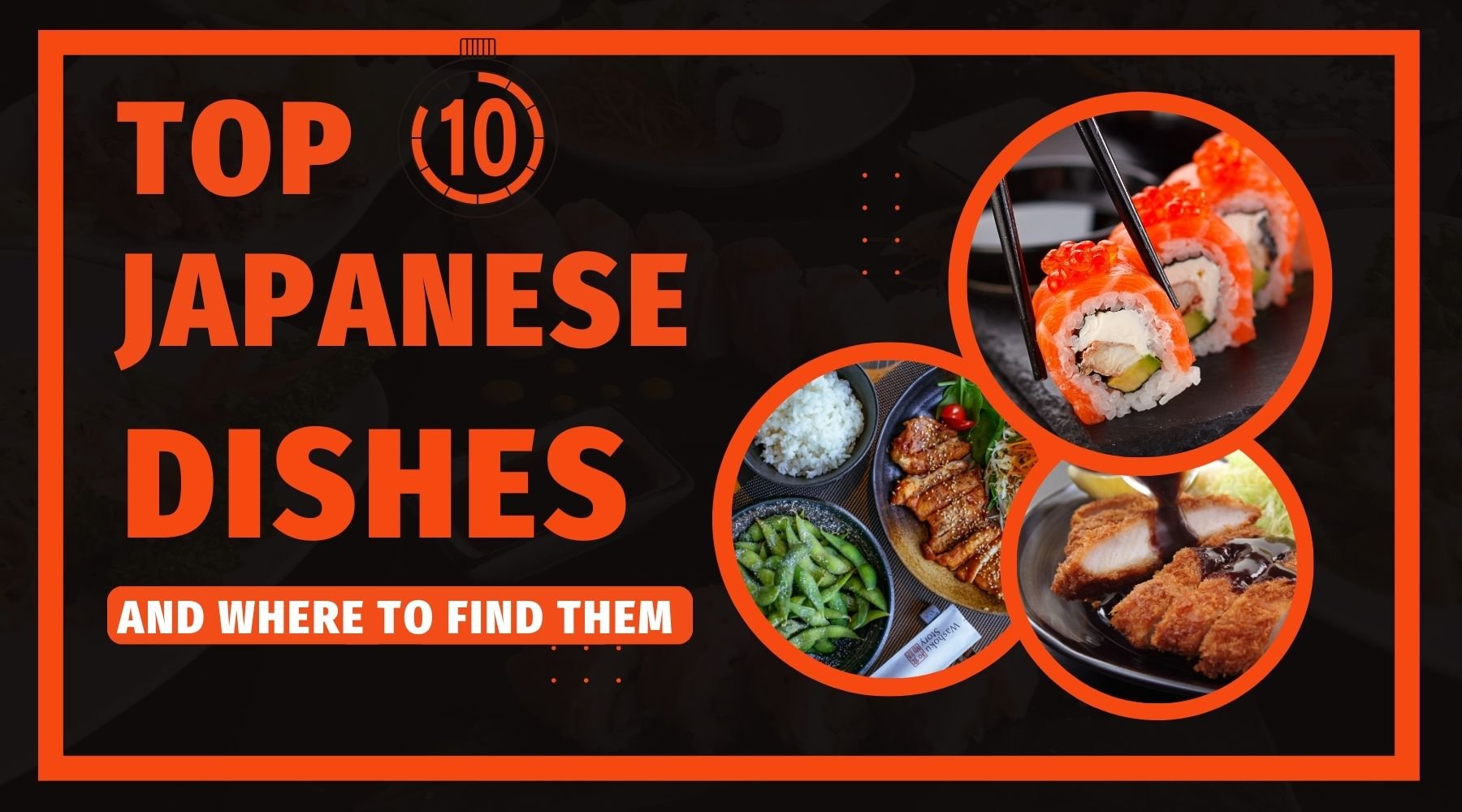Discover 10 Must-Try Japanese Dishes from Different Prefectures
1. Sushi

Sushi is synonymous with Japanese cuisine, but it is not the national dish. Curry is. Nevertheless, it is where you’ll experience the most authentic sushi, freshly prepared by an Itamae chef. And, there’s so many, you’ll find a sushi bar for every budget. Tachinomi bars are your no-frills sushi bars where there are no seats by design. The no-hassle dining experience is omakase sushi, which is entrusting the staff to serve you the chef’s recommendation. That’s usually whatever’s in season.
Best place: Tokyo's Tsukiji Market for the widest variety, and for something more authentic, head to Kanagawa.
2. Sashimi

Contrary to popular belief, sashami is not a type of sushi. Sushi is fish served with vinegared rice. The fish can be raw or partially cooked. Sashimi is raw fish, without rice or flavoring. Sashami-grade fish is put on ice as soon as it’s caught to lock in freshness.
Best place: The Hokkaido prefecture is in the northernmost part of the country, completely surrounded by the ocean It’s renowned fo Ikura (Salmon Roe), and Uni (Sea Urchin).
3. Ramen

No matter where you are in Japan, you won’t be far from a ramen bar, or a food stall. It’s so popular that our Tokyo Alley book nook kit would not be complete without having a ramen bar (and seating) in the scene. Tokyo would not be recognizable without a ramen bar, or ramen-ya as it’s called in Japan. At the most basic, it’s a Japanese noodle soup consistingYet, as you travel around the prefectures, every dish will be different due to the regional variations.
Best Place: Fukuoka's famous for Tonkotsu ramen. The most authentic experience will be had from a yatai (meaning food cart). In Fukuoka, there’s over 100 yatai.
4. Okonomiyaki and Takoyaki

Takoyaki is balls of octopus, lightly battered, and grilled while you wait and served piping hot. Okonomiyaki has more ingredients, is battered too, and grilled on a larger iron plate. Both dishes are the local specialty in Osaka.
Best Place: Food stalls around Osaka
5. Kaiseki

Kaiseki can be the considered the equivalent of fine dining, and you don’t need to know anything about food. The chef prepares a sequence of courses, all with seasonal ingredients and traditionally, it’ll be served in a private room. The sequence is typically, a soup/appetizer, sake when the soup is finished, simmered dishes, grilled dishes, rice, and finish it off with dessert.
Best Place: Kyoto is the home of Kaiseki because that’s where the imperial court was before it moved to Tokyo.
6. Tempura

Tempura is fish, or vegetables lightly battered and deep fried. Some restaurants serve it tentsuyu (a fish-based sauce), others have it as part of a main course, such as Tendon rice bowls, and it can be included as a topping in a noodle soup.
Best Place: Tokyo has swathes of tempura-ya.
7. Udon and Soba

Udon is noodles made with flour. Soba is noodles made with buckwheat. Considered Udon City is Kagawa where you’ll find the traditional handmade noodles at 600+ restaurants. To try soba, the Nagano prefecture is where it grows abundantly.
Best Place: At the Togakushi Soba Museum "Tonkururin", you can have a go at making the noodles yourself.
8. Unagi

Unagi is eel and it’s a unique part of Japanese cuisine because it’s a freshwater fish that’s difficult to cultivate in other climates outside of Japan. Lake Hamana in the Shizuoka prefecture has been cultivating unagi for over century. It’s so popular, there’s a National Day for eating grilled eel in Japan. “The Day of the Ox”. The dates change each year, but it’s always in July or August.
Best Place: The Shizuoka Prefecture
9. Yakitori

Yakirori is bite-sized grilled chicken chunks served on a bamboo skewer. It’s usually chicken anyway, but in Yakitori parlors, there’s often other meats - pork belly is another popular choice. Traditionally, it’s slow-cooked on a grill at a moderately low-temperature of 200 degrees Farenheit.
In restaurants, the grills are small and rectangular and the chef grills the chicken, monitors the moisture in the meat and adjusts with an in-house blend of tare sauce, which differs by restaurant. It’s made made by mixing and heating soy sauce with sake and/or mirin (Japanese rice wine), adding sugar or honey (or both), ginger, scallions and spices.
Best Place: Fukuoka yatai (food carts)
10. Funazushi

This is the real sushi! How it was done years ago. With fermentation and there’s only one prefecture in Japan where this is the local delicacy. The Shiga prefecture. This is a unique culinary experience and one that don’t come cheap.
“5,400 yen - 54,000 yen”. That’s over $300 USD for 1 fish! And the reason…
It’s ultra unique!
Best Place: The Shiga prefecture is where there’s a huge fish population at Lake Biwa. It’s the biggest lake in Japan, taking up a third the Shiga prefecture.




Share:
How to Start a Book Club that People Attend In-Person
Travel Japan By Train: